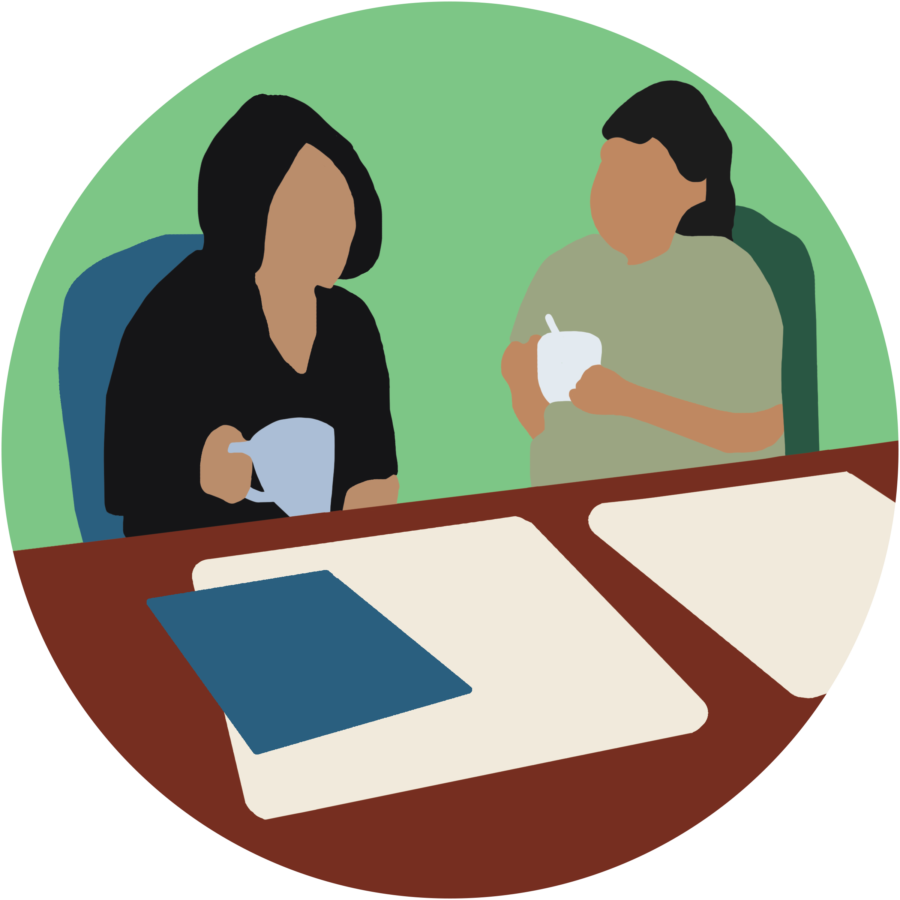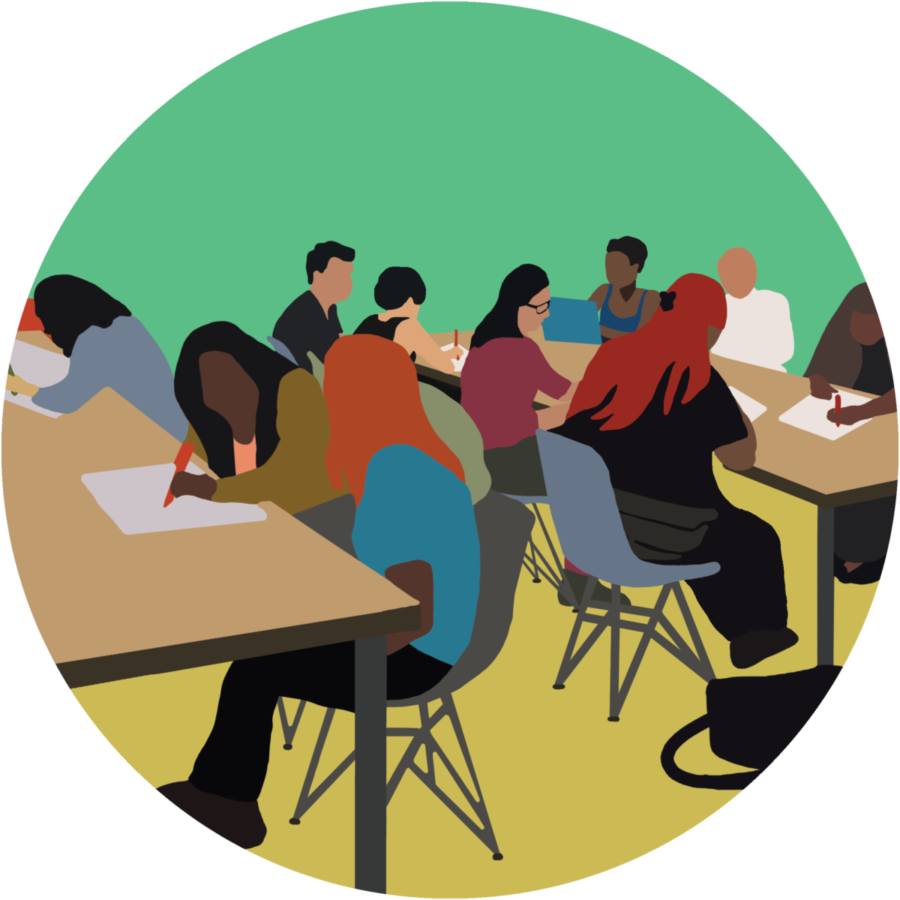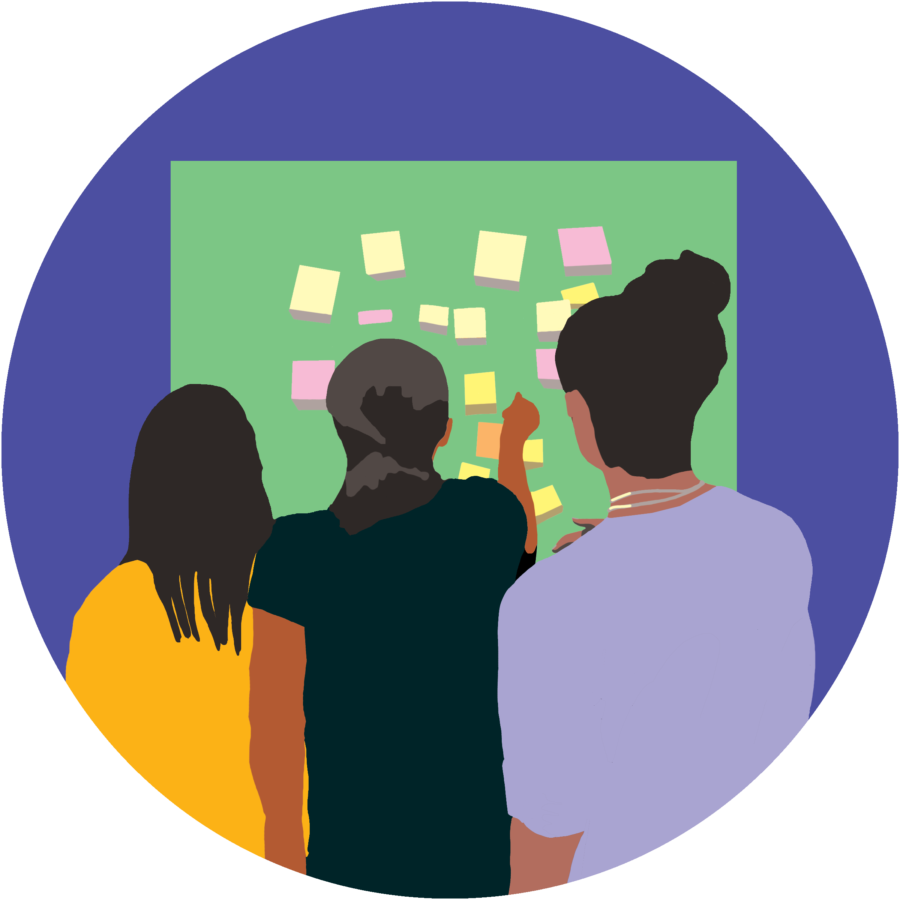It had to happen eventually — we’re redesigning our website. This is the first in a mini-series of posts that will provide a peek inside our redesign process.

Starting at the end: Evaluate and iterate
When we launched our current website in 2016, our primary goals were to describe what our co-design process looks like, and to share stories of co-design in action. After living with the site for several years, it was time to move to the 7th and final step of our co-design process cycle — evaluation and iteration.
We began by defining a series of big questions to guide us:
- How do our partners, collaborators, and friends describe our studio? How might that differ from how we describe ourselves?
- Who is using our website? What are they using it for?
- How can our website be a better resource for ourselves and our communities?
The responses to these questions would help us determine how our website needed to evolve, and if there were areas outside of our website that needed more attention as well.

Back to the beginning: Gather your people
To answer these questions, we needed to turn to our beloved community. This brought us back to the first step in the cycle: gathering. Gathering, as you’ll notice in the diagram at the top of this post, is also an ongoing activity. At multiple points in the process, we convene with stakeholders to ensure the project is aligned with its original intentions.
We reached out to collaborators, thought partners, and accomplices and invited them to participate in research interviews to help us shape the next iteration of the site. We were deeply moved that just about everyone we asked agreed.
Consent
Reviewing the consent form is a light but powerful mechanism that affirms people’s right to self-determination.
We start by asking for consent — and providing mechanisms for people to revoke consent. Here’s the information we provide:
- Background: what the project is, who we’re talking to, and how the data will be used
- Procedures: the name of the digital meeting platform (for online sessions), length of the interview, what information is being collected, where responses will be stored
- Affirmation that participation is voluntary and that participants may withdraw and revoke consent at any time
Here are the options we provide:
- Select one: I would like my name and identifying affiliations
- To be anonymized in the interview notes
- To be included in the interview notes
- Select one: I consent to And Also Too
- Using my session responses for solely for the purposes outlined in the Background Information
- Citing my interview responses (excluding my name and identifying affiliations) in publications about this research such as articles, blog posts, presentations, and reports.
- Please confirm: I understand I can revoke my consent to any of the above at any time in the future
At the beginning of each interview, we take a moment to review the consent form to ensure that people really do understand it. Digital life today can leave many of us with feelings of resignation that we don’t have control over what our data is used for. Reviewing the consent form is a light but powerful mechanism that affirms people’s right to self-determination.
These steps help us ensure that the consent people provide is freely given, reversible, informed, enthusiastic, and specific. For more information about consentful uses of data, please visit consentfultech.io.
Compensation
Many “design for good” initiatives do not provide either compensation or credit on the premise that getting to take part in a design process is reward enough.
When planning the budget for this project, we made sure to allot a significant amount to honoraria for research and usability testing participants.
We can’t stress enough how important it is to compensate and credit people for their time and contributions. Many “design for good” initiatives do not provide either compensation or credit on the premise that getting to take part in a design process is reward enough. This reproduces exploitative power dynamics in design, with professionals being paid and receiving credit, and those who are most impacted by the outcomes of the initiative providing unacknowledged labor.

Digging in: Understand the project
Co-design centers actual people rooted in actual communities
Conventional user experience design practice often uses fictional personas to represent desired users. A persona might read “Steve, white male, 30 years old, marketing manager, salary $89,000, single, goal is to buy a car online with minimal friction.” Steve is meant to represent a particular subset of users. But Steve isn’t real.
We avoid using personas, as they rely on what designers assume about particular groups of people, and thus tend to be riddled with stereotypes and biases. The popularity of fictional personas as a design tool reveals that design practice is disconnected from the communities they are impacting.
Co-design centers actual people rooted in actual communities, and relies on unearthing the concrete ways that design impacts them. It relies on relationship and trust building to do this work. This meant that, entering into the website refresh process, we had the benefit of actually knowing a lot of our users, and feeling comfortable reaching out.
We did need to group these people in some way, to help us code our research and understand trends in the data. Here’s what we came up with:
- Conductors
Directors working in organizations, make high level decisions, value beautifully designed work, may or may not be familiar with co-design but it aligns with their values. Might have visited our site when they first heard about us to determine whether we’d be a good fit for each other. - Doers
Managers working in organizations, advise on and implement high level decisions, know that design is important to the work they do, may or may not be familiar with co-design but it aligns with their values. Might have visited our site when they first heard about us, might read our blog posts. - Shifters
Community organizers and community technologists working in the same social movement spaces as us, are likely familiar with co-design. Might visit our site to read our blog posts and stories. - Scholars
Academics, teachers, and researchers that are highly knowledgeable about design and are interested in referencing our work. Might visit our site to learn about our process, and to read our blog posts and stories. - Connectors
Practitioners and administrators in the design community, are highly knowledgeable about design, want to understand co-design more deeply. Might visit our site to learn about our process, and to read our blog posts and stories.
We interviewed fifteen people who fell into one or more of these groups, and gained piles of insight. Stay tuned for the next post to read our findings!